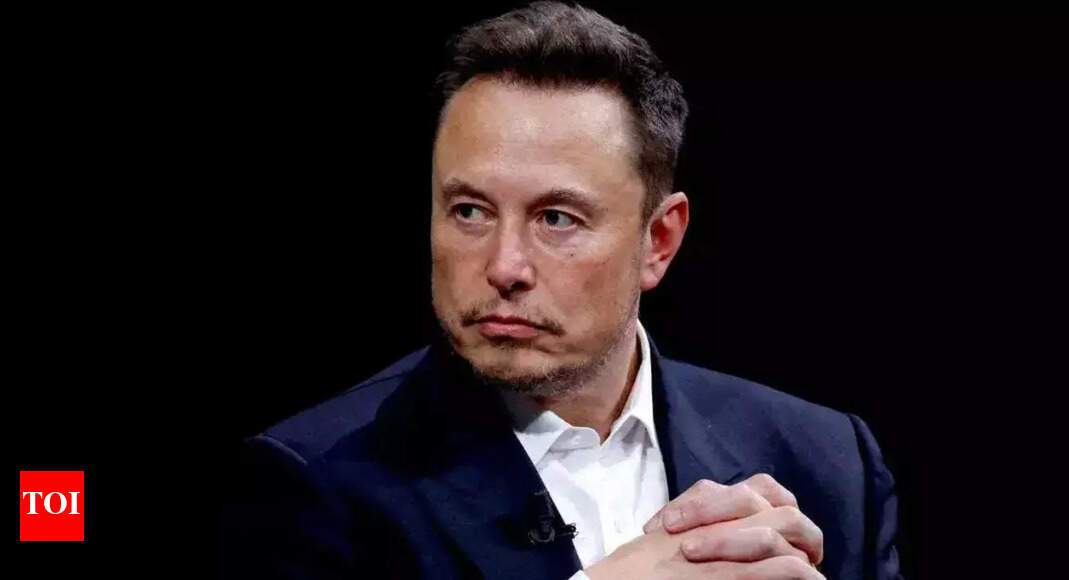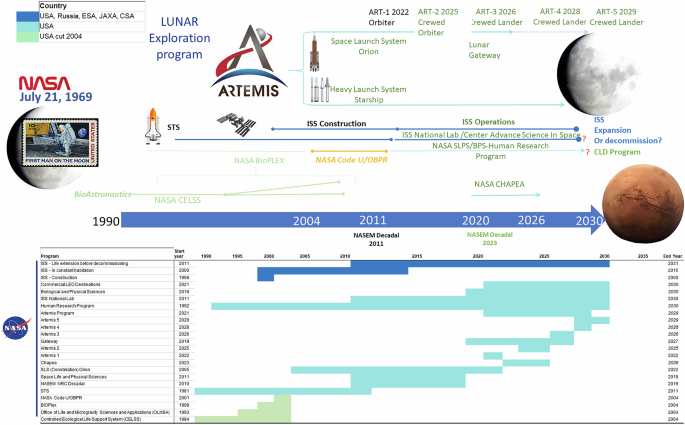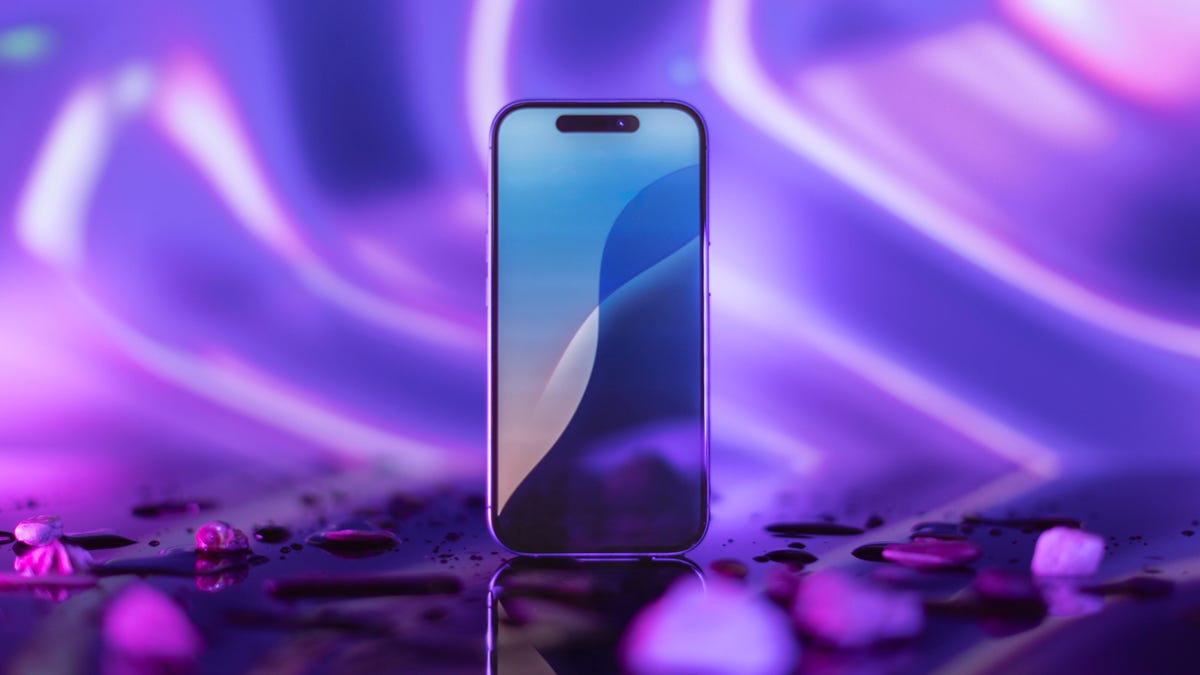NASA. NASA’s lunar exploration program overview. https://www.nasa.gov/wp-content/uploads/2020/12/artemis_plan-20200921.pdf (2020).
The State Council Information Office of the People’s Republic of China. China’s White Paper on Space, January 28, 2022. https://english.www.gov.cn/archive/whitepaper/202201/28/content_WS61f35b3dc6d09c94e48a467a.html (2022).
Li, C., Wang, C., Wei, Y. & Lin, Y. China’s present and future lunar exploration program. Science 365, 238–239 (2019).
PubMed
Google Scholar
Liu, H., Yao, Z., Fu, Y. & Feng, J. Review of research into bioregenerative life support systems which can support humans living in space. Life Sci. Space Res. 31, 113–120 (2021).
Google Scholar
Ordway, F. I. Project Horizon: an early study of a lunar outpost. Acta Astronautica 17, 1105–1121 (1988).
Google Scholar
Averner, M. M. The NASA CELSS program. In Proc. Biological Life Support Technologies: Commercial Opportunities. https://ntrs.nasa.gov/citations/19910004535 (1990).
MacElroy, R. D. & Bredt, J. Current concepts and future directions of CELSS. Adv. Space Res. 4, 221–230 (1985).
Google Scholar
Perchonok, M. et al. Bioregenerative Life Support Systems Test Complex (Bio-Plex) Food Processing System: a Dual System. https://ntrs.nasa.gov/citations/20030007918 (2001).
N.A.S.A. NASA Exploration System Architecture Study (ESAS). NASA-TM-2005-214062 (NSS, 2005).
Fu, Y. How to establish a bioregenerative life support system for long-term crewed missions to the moon or Mars. Astrobiology 16, 925–936 (2016).
PubMed
Google Scholar
Guo, S. Progress and prospect of research on controlled ecological life support technique. Reach 6, 1–10 (2017).
Google Scholar
Lasseur, C. MELISSA: the European project of a closed life support system. Gravit. Space Biol. 23, 3–12 (2010).
Google Scholar
Liu, H. Human lunar base: ‘lunar palace 1’ team of Beihang University unveils China’s ‘lunar palace’ plan. Innovation 5, 100592 (2024).
Google Scholar
The State Council Information Office of the People’s Republic of China. China’s space program: a 2021 perspective. https://english.www.gov.cn/archive/whitepaper/202201/28/content_WS61f35b3dc6d09c94e48a467a.html (2021).
National Academies of Sciences, Engineering, & Medicine. Thriving in Space: Ensuring the Future of Biological and Physical Sciences Research: a Decadal Survey for 2023–2032. (National Academies Press, 2023).
McDougall, W. The Heavens and the Earth (Johns Hopkins University Press, 1997).
NASA. Sputnik. https://www.nasa.gov/history/sputnik/14.html (1958).
Cross, M. K. D. The social construction of the space race: then and now. Int. Aff. 95, 1403–1421 (2019).
Google Scholar
Dora, V. D. From the radio shack to the cosmos: listening to Sputnik during the International Geophysical Year (1957–1958). Isis 114, 123–149 (2023).
Google Scholar
Mann, L. L. B. J. Forgotten champion of the space race. White House Hist. https://www.whitehousehistory.org/lyndon-b-johnson-forgotten-champion-of-the-space-race (2021).
Neal, H. A., Smith, T. L. & McCormick, J. B. Beyond Sputnik: US Science Policy in the Twenty-First Century. https://doi.org/10.3998/mpub.22958 (University of Michigan Press, 2008).
Memorandum for the President, “Bilateral Talks Concerning US-USSR Cooperation in Outer Space Activities,” July 5, 1962, JFK Presidential Archives, National Security Files Box 334 (1962).
Letter from President John F. Kennedy to Albert Thomas, September 23, 1963, US–USSR International Cooperation Documentation 1958–64, file 15571, NASA HQ Archives, Washington; D.C. Memo from John Glenn to McGeorge Bundy ‘Proposal Concerning Space Flight Information Negotiations with the Russians’, November 4, 1963, JFK Presidential Archives, National Security Files Box 308 (1963).
Bartóki-Gönczy, B. & Nagy, B. The Artemis Accords. Int. Leg. Mater. 62, 888–898 (2023).
Google Scholar
Doyle, T. P. NASA Invites Media to Panama, Austria Artemis Accords Signings. https://www.nasa.gov/news-release/nasa-invites-media-to-panama-austria-artemis-accords-signings/ (2024).
Outer Space Treaty, RES 2222 (XXI). https://www.unoosa.org/oosa/oosadoc/data/resolutions/1966/genera.ssembly_21st_session/res_2222_xxi.html (1966).
China National Space Administration and Russian Federal Space Agency. Joint Statement Between CNSA and ROSCOSMOS Regarding Cooperation for the Construction of the International Lunar Research Station. https://www.cnsa.gov.cn/english/n6465668/n6465670/c6811967/content.html (2021).
China National Space Administration and Russian Federal Space Agency. International Lunar Research Station (ILRS) Guide for Partnership. https://www.cnsa.gov.cn/english/n6465668/n6465670/c6811967/content.html (2021).
Kremlin. Ratification of the Russia-China intergovernmental agreement on cooperation in establishing the International Lunar Research Station. http://www.en.kremlin.ru/acts/news/74254 (2024).
Laxman, S. Nuclear power plant on Moon? India may join China, Russia in this Mission. The Times of India. https://timesofindia.indiatimes.com/india/nuclear-power-plant-on-moon-india-may-join-china-russia-in-this-mission/articleshow/113173061.cms (2024).
C.N.S.A. China-Latin American and Caribbean States Space Cooperation Forum Wuhan Declaration. https://www.cnsa.gov.cn/english/n6465652/n6465653/c10514240/content.html (2024).
U.S. Congress. Consolidated and Further Continuing Appropriations Act, 2012. Public Law 112–55. https://www.govinfo.gov/content/pkg/PLAW-112publ55/html/PLAW-112publ55.htm (2011).
Statista. Government expenditure on space programs in 2022 and 2024, by major country (in billion U.S. dollars). https://www.statista.com/statistics/745717/global-governmental-spending-on-space-programs-leading-countries/ (2024).
Planetary Society. NASA’s FY 2024 Budget. https://www.planetary.org/space-policy/nasas-fy-2024-budget#:~:text=NASA’s%20fiscal%20year%202024%20budget,in%20the%20congressional%20budget%20process (2024).
White House Office of Management and Budget, White House Technical Supplement to the 2026 Budget. Appendix. https://www.whitehouse.gov/wp-content/uploads/2025/05/appendix_fy2026.pdf (2025).
Statista. Budget of NASA from 1959 to 2020 (in million U.S dollars), by 2020 and non-adjusted dollars. https://www.statista.com/statistics/1022937/history-nasa-budget-1959-2020/.
National Academies of Sciences, Engineering, and Medicine. NASA at a Crossroads: Maintaining Workforce, Infrastructure, and Technology Preeminence in the Coming Decades. The National Academies Press, Washington, DC. https://doi.org/10.17226/27519 (2024).
China Aerospace Corporation. The Aerospace Science and Technology Group released the “Blue Book of China’s Aerospace Science and Technology Activities (2023)”. https://mp.weixin.qq.com/s/1cWhijwMZdSzy5Nl9kaQgQ (2024).
NASA. Gateway: humanity’s first space station around the moon. https://www.nasa.gov/mission/gateway/ (2025).
Cross, M. K. D. International Cooperation against All Odds: the Ultrasocial World. https://doi.org/10.1093/oso/9780192873903.001.0001 (Oxford University Press, Oxford, 2024).
Emme, E. M. Early History of the Space Age Part I. Aerosp. Historian 13, 74–78 (1966).
Google Scholar
Tsiolkovsky, K. E. Selected Works of Konstantin E.Tsiolkovsky (University Press of the Pacific, 2004).
Wheeler, R. M. Agriculture for space: people and places paving the way. Open Agric. 2, 14–32 (2017).
Google Scholar
Nelson, M. & Dempster, W. F. Living in space: results from Biosphere 2’s initial closure. Life Support Biosph. Sci. 2, 81–102 (1995).
NASA. Closed Life Support System. NASA SP-134. In Proc. a Conf. Held at Ames Research Center (1966) (NASA, 1967).
NASA. Bioregenerative Systems, NASA SP-165. In Proc. from Conf. held in Washington, DC (1966). (NASA, 1968).
MacElroy, R. D., Martello, N. V. & Smernoff, D. T. (eds) Controlled Ecological Life Support Systems: Celss ’85 Workshop. NASA Technical Memorandum 88215 (NASA, 1986).
Wheeler, R. M. NASA’s biomass production chamber: a testbed for bioregenerative life support studies. Adv. Space Res. 18, 215–224 (1996).
PubMed
Google Scholar
Wheeler, R. M. R. M. Plants for human life support and space exploration-NASA Technical Reports Server (NTRS). Gravit. Space Biol. 23, 25–35 (2010).
Google Scholar
Prince, R. P. & Knott, W. M. CELSS breadboard project at the Kennedy Space Center. Workshop on Lunar Base Agriculture: Soils for Plant Growth, 155−163 (American Society of Agronomy; 1989).
Barta, D. J. & Henninger, D. L. Johnson Space Center’s regenerative life support systems test bed. Adv. Space Res. 18, 211–221 (1996).
PubMed
Google Scholar
Bingham, G. E. et al. The Spacelab-Mir-1 “Greenhouse-2” experiment. Adv. Space Res. 18, 225–232 (1996).
PubMed
Google Scholar
Croxdale, J., Cook, M., Tibbitts, T. W., Brown, C. S. & Wheeler, R. M. Structure of potato tubers formed during spaceflight. J. Exp. Bot. 48, 2037–2043 (1997).
PubMed
Google Scholar
Romeyn, M. W., Spencer, L. E., Massa, G. D. & Wheeler, R. M. Crop readiness level (CRL): a scale to track progression of crop testing for space. In Proc 49th International Conference on Environmental Systems. 342 (ICES, 2019).
Sathyan, S., Kim, C.-S., Nagle, H. T., Brown, C. S. & Porterfield, D. M. A flexible microsensor array for root zone monitoring of a porous tube plant growth system for microgravity. Habitation 11, 5–14 (2006).
Google Scholar
Bula, R. J. et al. Light-emitting diodes as a radiation source for plants. HortScience 26, 203–205 (1991).
PubMed
Google Scholar
Goins, G. D., Yorio, N. C., Sanwo, M. M. & Brown, C. S. Photomorphogenesis, photosynthesis, and seed yield of wheat plants grown under red light-emitting diodes (LEDs) with and without supplemental blue lighting. J. Exp. Bot. 48, 1407–1413 (1997).
PubMed
Google Scholar
Massa, G. D., Kim, H.-H., Wheeler, R. M. & Mitchell, C. A. Plant productivity in response to LED lighting. HortScience 43, 1951–1956 (2008).
Google Scholar
Morrow, R., Duffie, N., Tibbitts, T. & Bula, R. Plant response in the ASTROCULTURETM flight experiment unit. SAE Technical Paper 951624. https://doi.org/10.4271/951624 (1995).
Porterfield, D. M., Barta, D. J., Ming, D. W., Morrow, R. C. & Musgrave, M. E. AstrocultureTM root metabolism and cytochemical analysis. Adv. Space Res. 26, 315–318 (2000).
PubMed
Google Scholar
Resh, H. M. Hydroponic Food Production: a Definitive Guidebook for the Advanced Home Gardener and the Commercial Hydroponic Grower. https://doi.org/10.1201/9781003133254 (CRC Press, Boca Raton, 2022).
Porterfield, D. M., Musgrave, M. E. & Dreschel, T. W. A ground-based comparison of nutrient delivery technologies originally developed for growing plants in the spaceflight environment. HortTechnology 10, 179–185 (2000).
PubMed
Google Scholar
Liao, J., Liu, G., Monje, O., Stutte, G. W. & Porterfield, D. M. Induction of hypoxic root metabolism results from physical limitations in O2 bioavailability in microgravity. Adv. Space Res. 34, 1579–1584 (2004).
PubMed
Google Scholar
Prince, R. P. & Bartok, J. W. Jr. Plant spacing for controlled environment plant growth. Trans. ASAE 21, 0332–0336 (1978).
Google Scholar
Wheeler, R. M. NASA’s contributions to vertical farming. Acta Hortic. 1369, 1–14 (2023).
Google Scholar
Field, R. Old MacDonald has a factory. Discover 9, 46–51 (1988).
Google Scholar
Barta, D. & Castillo, J. Preliminary designs of the biomass production system for the bioregenerative planetary life support systems test complex. 31st International Conference on Environmental Systems (SAE International, 2001).
MacElroy, R. D., Kliss, M. & Straight, C. Life support systems for Mars transit. Adv. Space Res. 12, 159–166 (1992).
PubMed
Google Scholar
Hoff, J. E., Howe, J. M. & Mitchell, C. A. Nutritional and cultural aspects of plant species selection for a regenerative life support system. Report to NASA Ames Research Center NSG2401 and NSG2404 (NASA, 1982).
Cooper, M., Perchonok, M. & Douglas, G. L. Initial assessment of the nutritional quality of the space food system over three years of ambient storage. NPJ Microgravity 3, 17 (2017).
PubMed
PubMed Central
Google Scholar
Vora, T. J., Averesch, N. J. H., DeBenedictis, E. A. & Rothschild, L. J. Space synthetic biology: a paradigm for sustainability on earth and beyond. N. Space https://doi.org/10.1089/space.2024.0002 (2024).
Google Scholar
Wheeler, R. M. et al. Crop Production for Advanced Life Support Systems – Observations From the Kennedy Space Center Breadboard Project. NASA TM-2003-211184 (NASA, 2003).
Wheeler, R. M. Crop productivities and radiation use efficiencies for bioregenerative life support. Adv. Space Res. 41, 706–713 (2008).
Google Scholar
Knott, W. M. The Breadboard Project: a functioning CELSS plant growth system. Adv. Space Res. 12, 45–52 (1992).
PubMed
Google Scholar
Li, C. et al. Characteristics of the lunar samples returned by the Chang’E-5 mission. Natl. Sci. Rev. 9. https://doi.org/10.1093/nsr/nwab188 (2022).
Liu, J. et al. Landing site selection and overview of China’s lunar landing missions. Space Sci. Rev. 217. https://doi.org/10.1007/s11214-020-00781-9 (2020).
Mallapaty, S. China’s space station is almost complete-how will scientists use it? Nature https://doi.org/10.1038/d41586-022-03462-5 (2022).
Preu, P. & Braun, M. G. SIMBOX on Chinese mission Shenzhou-8: Europe’s first bilateral cooperation utilizing China’s Shenzhou programme. Acta Astronautica 94, 584–591 (2014).
Google Scholar
D.R.L. Germany and China broaden their collaboration in science. 16485. https://www.dlr.de/en/latest/news/2016/20160122_germany-and-china-broaden-their-.laboration-in-science-management_16485 (2016).
Lei, X. et al. Development of mouse preimplantation embryos in space. Natl. Sci. Rev. 7, 1437–1446 (2020).
PubMed
PubMed Central
Google Scholar
Xie, G. The first biological experiment on lunar surface for humankind: device and results. Acta Astronautica 214, 216–223 (2024).
Google Scholar
Xie, G. The lunar one-sixth low gravity conduciveness to the improvement of the cold resistance of plants. Microgravity Sci. Technol. 35, 35 (2023).
Google Scholar
David, L. China eyes additional modules for Tiangong space station. Space.com. https://www.space.com/china-tiangong-space-station-additonal-modules (2023).
Li, X. et al. Operation of an enclosed aquatic ecosystem in the Shenzhou-8 mission. Acta Astronautica 134, 17–22 (2017).
Google Scholar
Ma, H. et al. Space life science in China. Chin. J. Space Sci. 42, 795 (2022).
Google Scholar
Chancellor, J. C., Scott, G. B. I. & Sutton, J. P. Space radiation: the number one risk to astronaut health beyond low Earth orbit. Life 4, 491 (2014).
PubMed
PubMed Central
Google Scholar
Polaris Dawn. https://polarisprogram.com/dawn/.
Delp, M. D. Apollo lunar astronauts show higher cardiovascular disease mortality: possible deep space radiation effects on the vascular endothelium. Sci. Rep. 6, 29901 (2016).
PubMed
PubMed Central
Google Scholar
Doyle, T. NASA selects first lunar instruments for Artemis astronaut deployment. NASA. https://www.nasa.gov/news-release/nasa-selects-first-lunar-instruments-for-artemis-astronaut-deployment/ (2024).
Wheeler, R. M. Roadmaps and strategies for crop research for bioregenerative life support systems. NASA TM-2009-214768 (NASA, 2009).
Porterfield, D. M. GeneLab Strategic Plan, NASA SP-2015-01-01-ARC (NASA, 2015).
NASA (n.d.) GeneLab. https://www.nasa.gov/osdr-genelab-about/
Berrios, D. C., Galazka, J., Grigorev, K., Gebre, S. & Costes, S. V. NASA GeneLab: interfaces for the exploration of space omics data. Nucleic Acids Res. 49, D1515–D1522 (2021).
PubMed
Google Scholar
NASA. NASA’s Low Earth Orbit Microgravity Strategy. NASA. https://www.nasa.gov/leomicrogravitystrategy (2024).
NASA. Moon to Mars Architecture. NASA. https://www.nasa.gov/moontomarsarchitecture (2024).
NASA. Strategic Plan. NASA. https://www.nasa.gov/ocfo/strategic-plan (2024).
Wheeler, R. M. HORTICULTURE FOR MARS | International Society for Horticultural Science. Acta Hortic. 642, 201–215 (2004).
Google Scholar
Poulet, L. Large-scale crop production for the Moon and Mars: current gaps and future perspectives. Front. Astron. Space Sci. 8, 733944 (2022).
Google Scholar
Porterfield, D. M. The biophysical limitations in physiological transport and exchange in plants grown in microgravity. J. Plant Growth Regul. 21, 177–190 (2002).
PubMed
Google Scholar
Porterfield, D. M., French, S. S. & DeCarlo, A. R. Development of a biomimetic root oxygen bioavailability sensor. Biol. Eng. Trans. 1, 219–227 (2022).
Google Scholar
Mitchell, C. A. Bioregenerative life-support systems. Am. J. Clin. Nutr. 60, 820–824 (1994).
Google Scholar
Boyd, A. P. et al. Controlled environment agriculture: An opportunity to strengthen interagency research collaboration in the US government. PNAS Nexus 4, pgaf155 (2025).
White House. United States Space Priorities Framework. White House. https://www.whitehouse.gov/wp-content/uploads/2021/12/United-States-Space-Priorities-Framework-_-December-1-2021.pdf (2021).
White House. Fact Sheet: First National Cislunar Science and Technology Strategy. White House. https://www.whitehouse.gov/ostp/news-updates/2022/11/17/fact-sheet-first-national-cislunar-science-technology-strategy/ (2022).
NASA. Growing the Lunar Economy. NASA. https://www.nasa.gov/humans-in-space/growing-the-lunar-economy/ (2024).
DARPA. LunA-10: 10-Year Lunar Architecture Capability Study. DARPA. https://www.darpa.mil/research/programs/ten-year-lunar-architecture-luna-10-capability-study (DARPA, 2025).
Porterfield, D. M., Monje, O., Tulodziecki, D. & Wheeler, R. Bioregenerative life support systems from Moon to Mars: a roadmap (work in progress).
United Nations. Sustainable Development Goals. https://sdgs.un.org/goals (accessed October 26, 2024).
U.S. Agency for International Development. The U.S. commitment to the Sustainable Development Goals. https://www.usaid.gov/sustainable-development-goals (accessed October 26, 2024).
Seylani, A. et al. Ethical considerations for the age of non-governmental space exploration. Nat. Commun. https://doi.org/10.1038/s41467-023-44357-x (2024).
PubMed
PubMed Central
Google Scholar
Rahimzadeh, V. et al. Ethically cleared to launch? Science 381, 1408–1411 (2023).
PubMed
Google Scholar
Kelly, J. W., Hamlin, E. M., McCulloch, D. D., Moxey, L. E. & Seibold, R. W. A Decade of space technology maturation through NASA’s flight opportunities program. AIAA 2020-4135 https://doi.org/10.2514/6.2020-4135 (2020).




![Download Google Camera for Oppo Reno 14 (Pro) [GCam 9.4]](https://afnnews.qaasid.com/wp-content/uploads/2025/08/google-camera-for-oppo-reno-14-pro.webp.webp)




